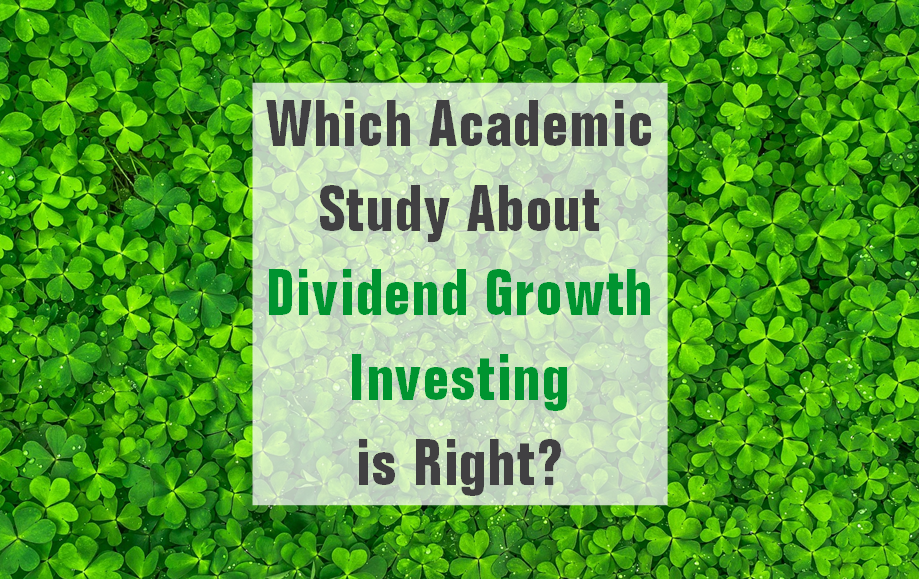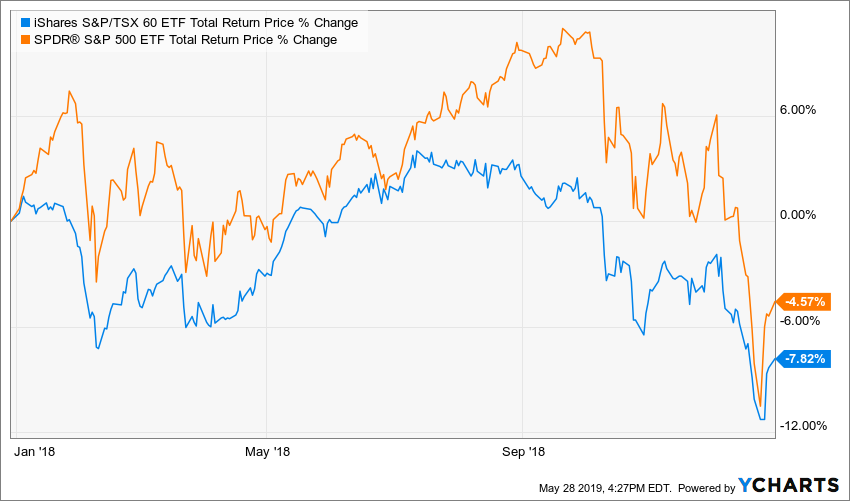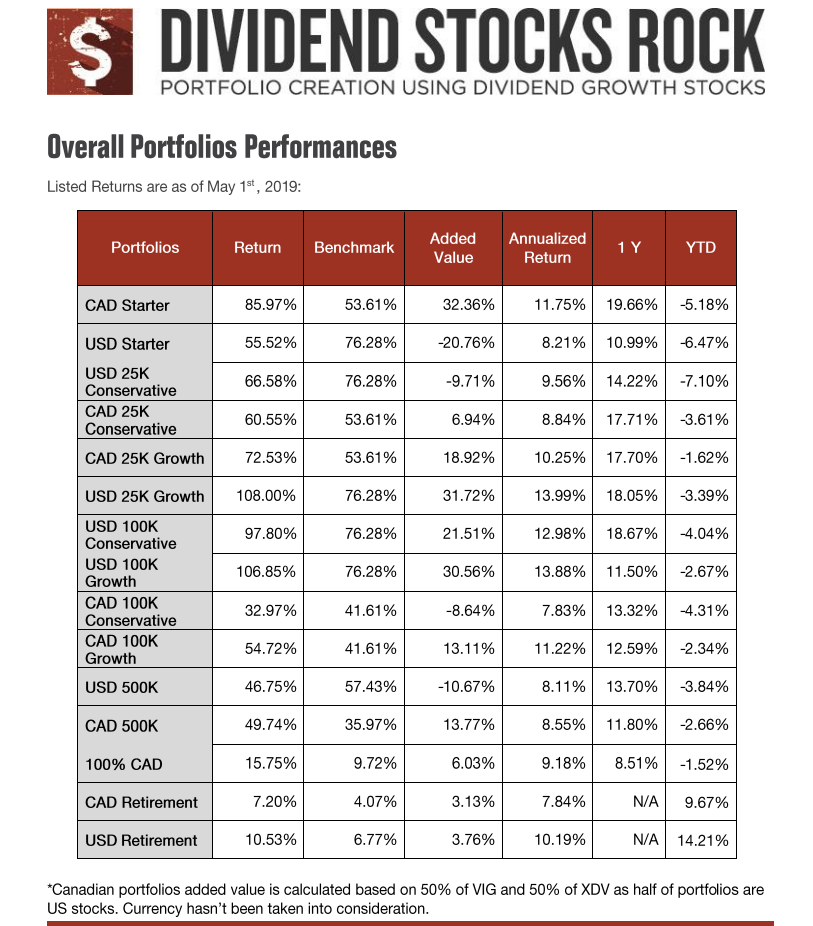
I’m sure you have a friend that knows everything about hockey, but has never played. He knows about the best strategies and how to use them against specific rivals, but never coached a hockey team in his life.
I’m also sure that when you had your first child, many people around you brought up studies and books telling you how to raise it. They shared how to make sure your newborn sleeps well at night or how to manage crying and screaming without hurting his feelings when he grows up.
There is something “enlightening” about studies: you can use them to back up any of your arguments. Funny enough, it seems that for each scientist telling you there is climate change, you can find one telling you it’s a fairy tale. In other words, there are different research methodologies applied to various topics giving a myriad of points of views.
Which brings me to today’s topic: Which academic study about dividend growth investing is right? (hint; you won’t find the answer in this article).

Source: Pixabay
Is investing about luck?
For index investors, if you don’t use a basket of ETFs to build your portfolio and you still succeed in meeting your investing goals, you are nothing but an anecdote. As many like to mention “bull markets make tons of geniuses”.
If you follow my blog, you know I’m extremely transparent with my thoughts and my portfolio performance. I’m not better than you and I make mistakes. But I do my best to learn from them and I expose my returns and thoughts so you can learn along with me.
I shifted my entire portfolio toward a dividend growth investing strategy (explained through 7 investing rules) between 2010 and 2012. In early 2012, my entire portfolio showed dividend growers only. In 2017, I did a recap and made some calculations to see if this was worth it. After all, why put so much work into something if I can’t follow the market, right? During that 5-year period, I beat both the stock markets (S&P 500 total return and TSX) and my dividend ETFs benchmark (a mix of VIG and XDV.TO). It wasn’t a huge win, but I still did better. I guess it’s an even bigger win since many index believers (trust me, they are as crazy as dividend growth investors… hahaha!) will mention that, historically, the dividend aristocrats have done a lot better during down markets than bull markets. You can read the entire article here:
Can You Beat the Market? – Is It That Relevant?
But that article is old right? 2 years in “internet ages” is like a century. So I revisited my returns in January 2019, right after the bear market of 2018… ahem… market correction. Before the market fully recovered, I looked at all my accounts (they are all invested following the same strategy) for the 2018 return. Here are the returns:
RRSP: +3.9%
Locked-in CAD: +3.7%
Locked-in USD: +7.5%
Pro-rated return for all my account together: +5.11%
Investing in both Canadian and US ETFs would have put me in the “sore losers” category for sure:

Source: Ycharts
Additional notes:
- All returns are “total returns” (including both stock appreciation and dividend paid)
- This is not a simulation, it’s real money
- Taxes haven’t been taken into consideration because all money is invested in tax-sheltered accounts
- My US portfolio shows a 9% currency favorable fluctuation
- This is a real-life example, but not the norm and it’s a very small sample
- You can the entire article here
- I have no international stocks, here’s why
You also know that I created Dividend Stocks Rock, a membership website helping investors to manage their dividend growth portfolios. We offer various portfolio models (15 in total) where we tell investors when we buy or sell our positions. You can see our returns since we created our first portfolios in 2013:

Additional notes:
- Out of 15 portfolios, 11 of them beat their benchmark
- Start portfolios only have 4 stocks, I’d say it’s unfair to look at their added value.
- Retirement portfolios were created right before the market crash (on July 1st 2018)
- Retirement portfolios were showing flat returns as of January 1st 2019 (while the market was in negative territories).
Are my past performances based on luck, or are they statistical errors? Honestly, I don’t really know. Is it relevant?
This whole “studies have proven that…” story can start a lot of fights, but most people from both sides are forgetting the most important point for the retail investor.
What really matters is achieving your financial goals – not beating the markets
Imagine that you sit down with a financial planner to determine how much money you need at retirement. The financial planner asks you several questions, and look at various financial papers (balance sheet, insurance, assets, liabilities, will, etc.) After hours of discussion and analysis, the financial planner comes back with a plan: you need to build a portfolio of $1,734,523.11 (he’s a very meticulous guy) to retire comfortably. With this amount, you will not only be able to retire, but you will also live a stress-free retirement and you will achieve all your dreams.
In order to achieve your retirement goal, the financial planner offers you two different plans:
Plan A is based on academic studies proving to you that it’s the best possible investing plan. It should outperform plan B by about a 2% annualized return. You are very excited by the perspectives of crushing your goals, but you also realize that you will likely get stressed out about this plan and this could bring about several moments where you feel miserable because of high fluctuations.
Plan B is a solid investing plan that is more conservative than plan A. On paper and according to academic studies, it will underperform Plan A, but you will still meet your retirement goals on time. While it’s not exciting, you know you won’t stress with this plan and will live stress-free before your reach retirement.
Would you go with plan A solely based on returns and forget about all those times you will want to sell everything because you are in a panic? What’s more important, your returns or how you feel while building your nest egg?
Now, I’m not comparing Plan A with index investing and Plan B with dividend growth investing. My point here is that the most important thing for any investor is to achieve their goal. If you are having fun investing in dividend stocks and you still achieve your goal, it’s not relevant which methodology you used.
However, I do think you will do better investing in dividend growth stocks. Here’s why.
Why dividend growth investing kick ass against all odds
To get the whole picture of why some people think that dividend investing doesn’t matter, you can read my point on ETF vs Dividend. According to financial theory, you can’t select companies and beat the market because the market is efficient and prices everything accordingly (lol). Also, a $1 dividend paid is a $1 taken out of the company. Therefore, there is no creation of value in receiving a dividend (very true). So why would you focus on dividend growth stocks if there is no edge to gain out of it?
Because dividend growth stocks regroup many similar great companies
Instead of seeing the dividend payment as an “end”, look at it as a “super powered filter” to reduce your search. Some will argue that I cut out about half of the stock market if I ignore non-dividend payers, but I would argue that pretty much significative metrics would perform something similar. Imagine you only look at companies growing their cash flow from operations over the past 3 and 5 years. Or companies trading under a 19 PE ratio. Or companies showing both revenue and EPS growth for the past 5 years. Or companies showing debt to EBIDTA or debt to equity under 0.60.
Most investors would say that cash flow, revenue, earnings, PE or debt ratios are important metrics. The second you apply one of them in your filter, you automatically cut companies off your radar. Some of them would have been great companies, but some others would have resulted in poor investment choices.
This is why investors use metrics as filters in the first place; to narrow down their stock universe, to most easily pick companies that will thrive in the future, and to find the needle in the haystack. This is why I use dividend growth as an important metric when I build my stock list.
Dividend growers are often quality companies
This is not a golden rule or an unbreakable law. Let me remind you, I told you that I make mistakes at the beginning of this article. Dividend growers are often quality companies. In order to grow your dividend year after year, a company must be doing something right. It must be show consistent revenue and earnings growth. Without business growth, management can’t increase dividends forever. Sooner or later, the money the business makes won’t be enough to maintain payments to shareholders.
Therefore, most of the dividend growers are also leaders of their market. They enjoy competitive edges and thrive through various growth vectors. It could be a growing sector, strong brand power or a specific business model enabling higher profit but better service. By looking at dividend growers, you often look at the cream of the crop in term of companies.
While you will miss the Facebook (FB) and Netflix (NFLX) opportunities, you will also avoid many flashes in the pan too. Instead of buying FB, you’ll be adding Microsoft (MSFT) and while you will ignore NFLX, you will be buying shares of Disney (DIS). Things could be worst, right?
You can’t use dividend growers and close your eyes
I think this is a bit foolish to define dividend growth investors by a bunch of income loving investors looking solely for stocks with a dividend. While the dividend is important, it shouldn’t be the only metric used when analyzing a stock. In fact, most dividend growth investors will have their set of metrics and a complete methodology to analyze companies.
Since you have been courageous enough to keep reading to the end, I’ll spare you today from the set of metrics I use. I’ll keep that for my next article. Make sure to follow me or subscribe to my newsletter to not miss it!
Cheers,
Mike
Disclaimer: my only non-dividend paying stock is Amazon (AMZN). I own shares of DIS and MSFT.
The post Is Investing About Luck? Or Why Dividend Growth Kicks Ass Against All Odds appeared first on The Dividend Guy Blog.
